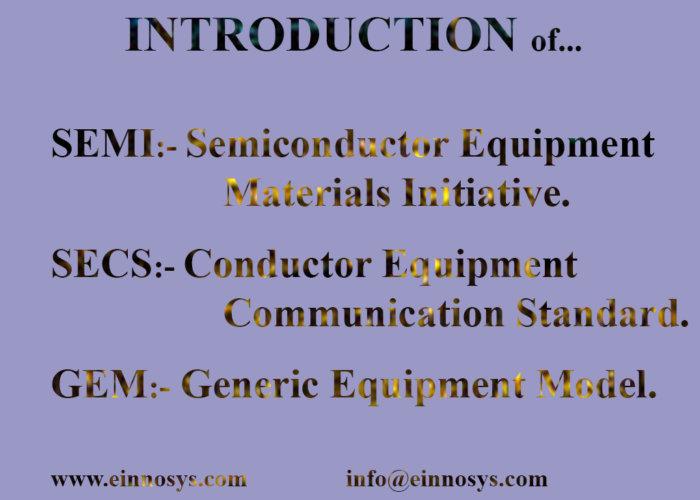
As we talk about SEMI, SECS and GEM. Firstly let us understand what these acronyms are.
SECS refers to Semi-Conductor Equipment Communication Standard, GEM refers to the Generic Equipment Model for Communications and Control of Manufacturing Equipment and SEMI stands for Semiconductor Equipment Materials Initiative.
Semiconductor Equipment Materials Initiative ( SEMI ) developed a set of standards called SECS/GEM. These standards are used to define a set of communication protocols between automated equipment and the hosts.
SEMI standards came into existence somewhere in 1970’s. The idea behind the introduction of such a standard was to support the small but blooming semiconductor industry. SEMI brought a standard in communication protocol between various semiconductor equipment and fab hosts. This eliminated the need for the communication specification that was equipment or fab host specific. In that way, these standards are similar to how TCP/IP protocol is defined for network communication or how RS232 is defined for serial communication.
Earlier there was no standard process to handle the communication between semiconductor equipment and a fab host. This used to lead to the high cost and low performance in the semiconductors industry. So this created a need for the standard process to tackle this situation. That’s where the SEMI standards for SECS/GEM came into existence.
SECS/GEM standard has to be implemented on both the host and equipment. The equipment runs the software on its assigned computer that implements and complies to various SEMI standards such as E30, E4, E5, and E30. Likewise, the factory runs the host software need to implement the necessary software to implement the exact same SEMI standards so that it can communicate in the same “language” with the equipment.
